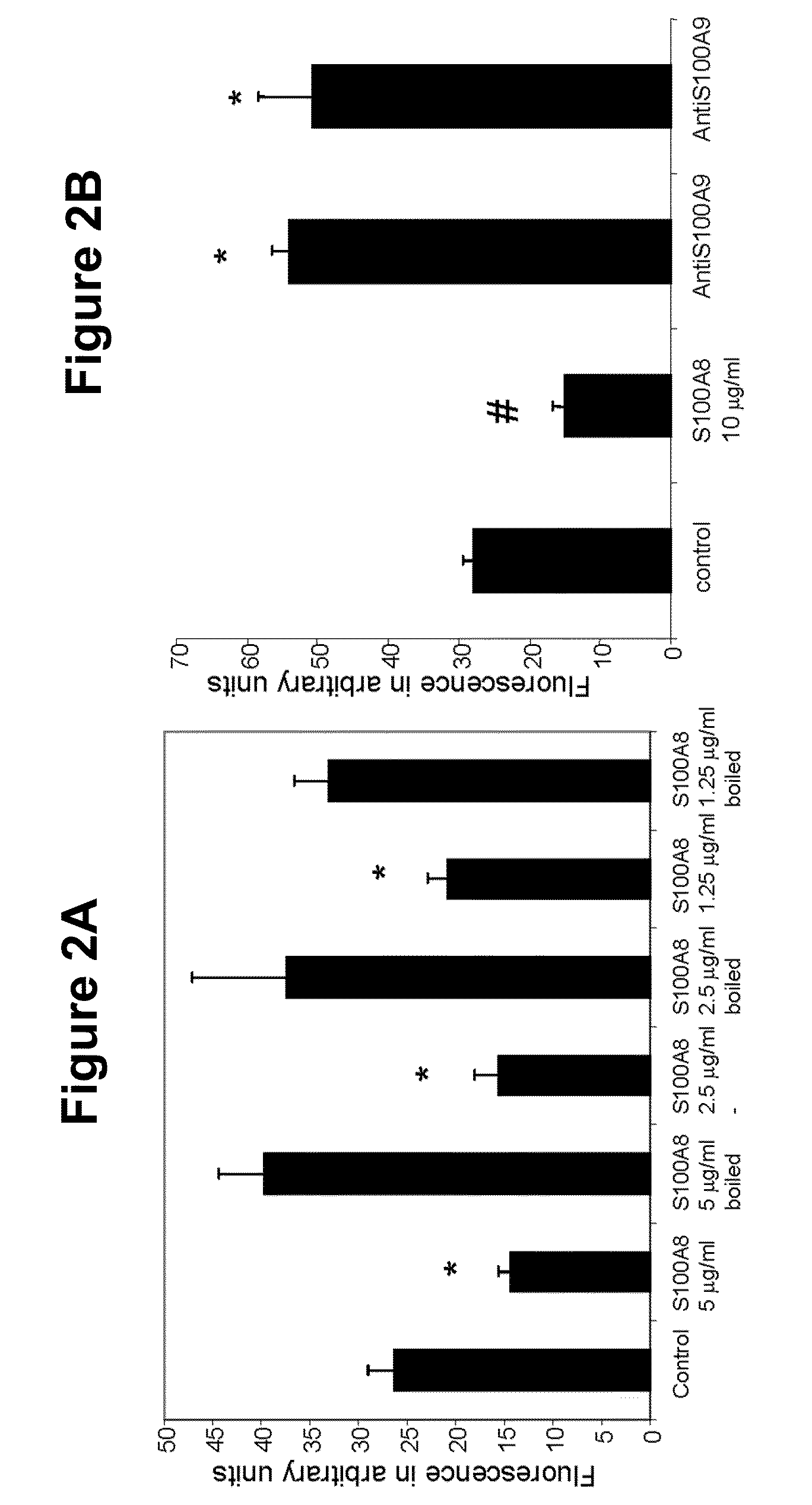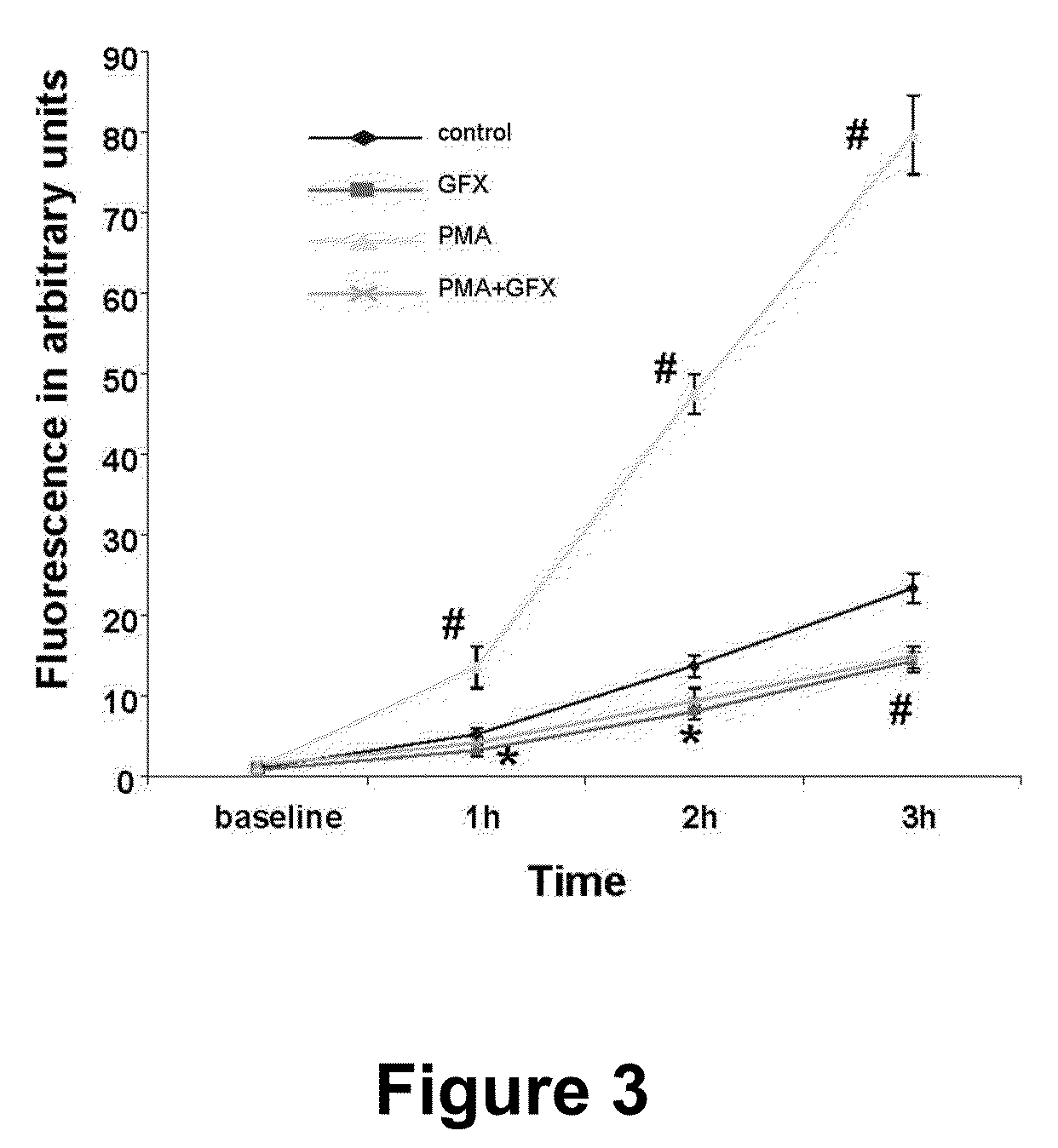Myeloid protein activation of anti-inflammatory and anti-hypoxic pathway
a myeloid protein and anti-hypoxic technology, applied in the direction of antinoxious agents, peptide/protein ingredients, peptide sources, etc., can solve the problems of psychological factors affecting wound healing and closure, still further tissue damage, and cutaneous wound healing is a multi-step process prone to hypoxia, so as to prevent the dimerization of the protein and improve the effect of wound healing
- Summary
- Abstract
- Description
- Claims
- Application Information
AI Technical Summary
Benefits of technology
Problems solved by technology
Method used
Image
Examples
Embodiment Construction
[0030]To facilitate an understanding of the present invention, a number of terms and phrases are defined below:
[0031]The term “gene” refers to a nucleic acid (e.g., DNA) sequence that comprises coding sequences necessary for the production of a polypeptide or precursor or RNA encoding human S100A8 and / or S100A9. The polypeptide can be encoded by a full length coding sequence or by any portion of the coding sequence so long as the desired activity or functional properties (e.g., enzymatic activity, ligand binding, signal transduction, etc.) of the full-length or fragment is retained. The term also encompasses the coding region of a structural gene and the sequences located adjacent to the coding region on both the 5′ and 3′ ends, such that the gene corresponds to the length of the full-length mRNA. The sequences that are located 5′ of the coding region and which are present on the mRNA are referred to as 5′ untranslated sequences. The sequences that are located 3′ or downstream of th...
PUM
| Property | Measurement | Unit |
|---|---|---|
| concentration | aaaaa | aaaaa |
| concentration | aaaaa | aaaaa |
| concentration | aaaaa | aaaaa |
Abstract
Description
Claims
Application Information
 Login to View More
Login to View More - R&D
- Intellectual Property
- Life Sciences
- Materials
- Tech Scout
- Unparalleled Data Quality
- Higher Quality Content
- 60% Fewer Hallucinations
Browse by: Latest US Patents, China's latest patents, Technical Efficacy Thesaurus, Application Domain, Technology Topic, Popular Technical Reports.
© 2025 PatSnap. All rights reserved.Legal|Privacy policy|Modern Slavery Act Transparency Statement|Sitemap|About US| Contact US: help@patsnap.com



